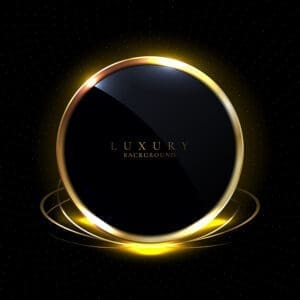
Like so many great hoteliers and entrepreneurs, Conrad Hilton came from relatively humble beginnings but possessed a combination of vision and financial genius peppered by a very healthy ego. His approach towards the management and operation of hotels and the standards he set continue to be copied in the hotel business throughout the world.
It is true that in terms of style and grandeur the Hilton Hotel chain does not represent the apex of world-class hostelry, but Conrad Hilton made up for this over the years by identifying the hotels that stood as the jewels in the crown of many a great city. He purchased these institutions when they were running at a loss, quickly turning each one into a highly profitable and efficient enterprise. Great examples of this strategy include Steven’s and the Palmer House in Chicago; the Mayflower in Washington, DC; the Roosevelt and Plaza in New York City; and, of course, the ultimate prestigious American hotel of Hilton’s day, New York’s Waldorf Astoria. In his biography Be My Guest, Hilton decisively declared: ‘Nothing stood between me and the Waldorf.’
Conrad’s father August Hilton had several businesses in their hometown of Antonio in New Mexico, including a small hotel operation connected to the family’s General Store. On returning from World War I, Conrad went to Cisco in Texas intending to buy a small bank. Instead he purchased a small hotel, often renting out the rooms in eight-hour shifts to the local oil-field workers. There was no turning back; within four years Hilton owned several hotels across the state. The first purpose-built hotel to bear the Hilton moniker, the Dallas Hilton, opened in 1925.
Fascinating Period
Those were interesting times for any enterprising entrepreneur. The volatile financial climate, which culminated in the stock market crash of 1929, then the Great Depression, only provided fuel for Hilton with which to forge an economic and efficient empire – the key to his success. He lost a few properties, but managed to bounce back, once again expanding his hotel ownership.
Hilton’s foray into New York City in 1943 with the Plaza and the Roosevelt established the Hilton Hotels Corporation as the first coast-to-coast hotel chain in the United States. At about the same time and in spite of the opinions of his fellow board members, Hilton began to buy Waldorf bonds. Since its opening in 1931, Conrad Hilton had carried a photo of the Waldorf=Astoria around in his pocket. He finally realised his long-held dream in 1949 by obtaining the lease of the Waldorf=Astoria. He achieved this by securing 68 percent of the hotel’s stock for US$3 million. Hilton’s personal management philosophy, ‘Dig for Gold’, which referred to the utilisation of hotel space in order to maximise profit, had no better example than Hilton’s success with the grand old Waldorf. Within a year the hotel was making a decent profit for the first time in its history. The man who crossed the ‘great divide’ in the hotel business between the Roaring Twenties and the modern era is Conrad Hilton. The hotel business coursed through Hilton’s veins – he loved it, lived it and built the Hilton Hotels Corporation into a vast and constantly evolving empire. He was a genius at understanding and capitalising on market needs.
The Waldorf=Astoria was the perfect stage for a powerbroker like Conrad Hilton. After all, he could rub shoulders with the most powerful politicians and financiers of the day. Through him the American delegation to the United Nations set up permanent residence at the Waldorf. This paved the way for Hilton himself to enter the political fray – foreign ambassadors, political leaders and international celebrities became his personal friends. In particular, Hilton befriended President Dwight D. Eisenhower, and the pair often played golf together (Eisenhower eventually took up residence at the hotel).
The Waldorf=Astoria was considered, after all, ‘The White House’ of American hotels, and Conrad Hilton was determined that he should become its ‘Mr President’. It would only be a matter of time before Hilton conquered the world through Hilton International.
An American home away from home
Conrad Hilton was above all a staunch supporter of God and Country, and in the post-World War II climate he believed that America was well positioned to step in and save the embattled world. The Hilton Hotel’s corporate motto reads: ‘World Peace Through International Trade and Travel’. Hilton was instrumental in setting up the International Monetary Fund (IMF) and
the International Bank for Reconstruction. The Hilton International hotel chain would help the economies of poorer countries by utilising local labour and materials.
Conrad Hilton was a master of financial colonisation. The post-war world was on the move, and travel was fast becoming commonplace. Hilton’s personal vision was that new hotels would boost local economies while simultaneously providing American tourists with a safe and comfortable home away from home. A 1963 Town & Country article referring to Hilton hotels stated that ‘one can eat the food without dreading tomorrow, and there are no Old World bugs crawling around the minute the lights are off’. Standardisation implied familiarity, and the Hilton name on a hotel was a welcome sight for American tourists abroad.
Hilton also established a luxury brand of the chain under the moniker of Conrad Hilton – the Waldorf=Astoria being the first. (In more recent times, the Waldorf=Astoria has in itself become an über-brand of luxury hotels, meeting the current demands for exclusivity and opulence.) William Barron Hilton bought the building and the land under it when he became Chairman of Hilton Hotels Corporation upon his father’s death in 1979.
The elder statesman of hotels finally checked out at the ripe old age of 91, and his last words were reportedly: ‘Leave the shower curtain on the inside of the tub.’ Even as he drew his last breath, work came first.
Read more about Conrad Hilton in Great, Grand and Famous Hotels.



















